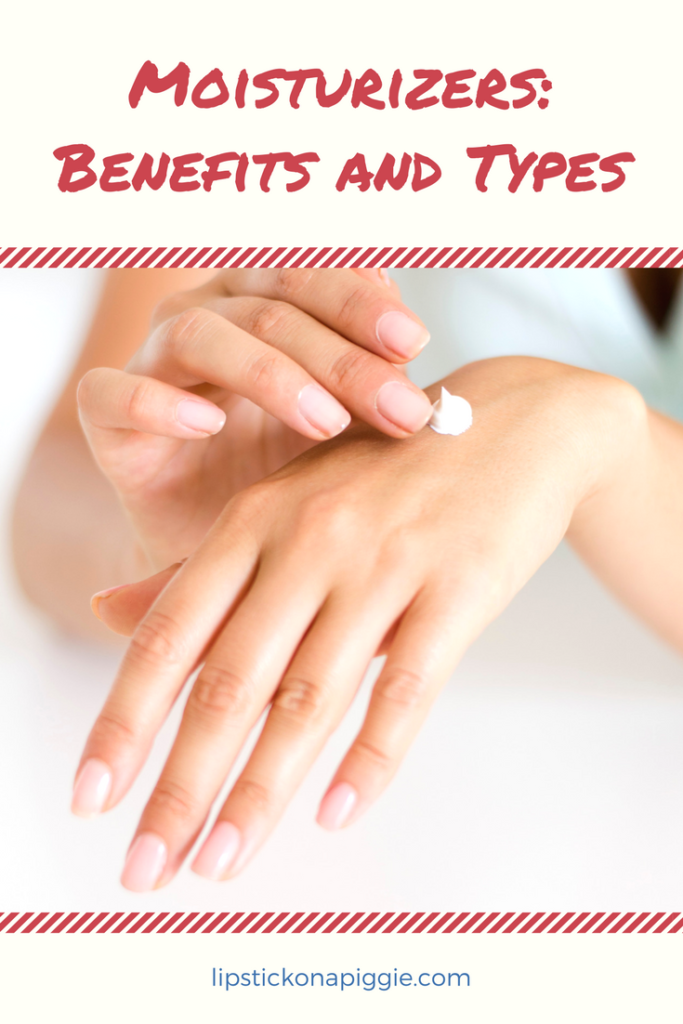
Moisturizers are arguably the most important step in any skincare regimen. When it comes to starting an Asian beauty routine, moisturizers are one of the four key products (along with an oil cleanser, second cleanser, and sunscreen) that you should have before moving on to other products. This blog post will discuss the benefits of moisturizers and its different types in hopes that you’ll be able to find one that works for you!
(Note: This post contains affiliate links. If you click a link and/or make a purchase I get a small commission. Thank you for your support!)
What are moisturizers?
The term “moisturizer” is used to describe any substance that adds water to or assists in the retention of water in the stratum corneum. Popularly known as the “moisture barrier” in the Asian beauty community, the stratum corneum is the skin’s outermost layer and serves as protection again environmental pollutants (chemicals, irritants, bacteria, etc.) and skin water loss. A compromised stratum corneum can lead to higher rates of transepidural water loss, which is when moisture leaves the skin. This can cause a number of skin issues, including:
- Dryness
- Irritation
- Inflammation
- Fine lines and wrinkles
- Roughness
What are the different types?
Moisturizers can be classified into the following types: occlusives, humectants, emollients, and rejuvenators.
Occlusives
Occlusives are one of the most common and effective types of moisturizers. They work by creating a hydrophobic (“water fearing”) layer which traps moisture on the skin’s surface. In some cases, an occlusive can also function as an emollient due to its ability to fill gaps between the cells in the stratum corneum.
Examples of Occlusives
- Petroleum-based moisturizers: Aquaphor, Vaseline
- Dimethicone
- Mineral Oil
Pros:
- Prevents transepidural water loss by trapping moisture on the skin’s surface
- Has the ability to heal moisture barrier
- Reduces fine lines and wrinkles
Cons:
- Messy and sometimes greasy feeling
- Comedogenic and may cause breakouts
Humectants
Humectants increase skin water content by promoting the transfer of water from the skin’s inner layer (dermis) to its outer layer (epidermis) . Unlike occlusives, humectant molecules contain hydrophillic (“water loving”) groups which are attracted to water.
Examples of Humectants
- Glycerin
- Hyaluronic acid
- Alpha Hydroxy Acids (Glycolic, Mandelic, Lactic, etc.)
Pros:
- Promotes skin hydration
- Improves skin roughness and scaling
Cons:
- Can cause skin dryness in dry environments due to water leaving the skin’s dermis
- Can cause skin irritation, especially to individuals with damaged moisture barriers
To combat skin dryness and irritation, humectants are often mixed with occlusives to trap water on the skin’s surface.
Emollients
Emollients fill in the gaps between corneocytes – the cells making up the stratum corneum. This helps to make the skin softer and smoother. Examples of emollients include the following:
- Natural oils (olive, argan, almond, coconut, etc.)
- Natural butters (cocoa, shea, etc.)
- Linoleic acid
Pros:
- Smooths and softens skin
Cons:
- Messy and sometimes greasy feeling
- Comedogenic and may cause breakouts
Rejuvenators
Rejuvenators work by attempting to restore essential proteins to the skin. They can also have an emollient effect as they crate a film on the skin’s surface. Examples of ingredients in rejuvenators:
- Collagen
- Keratin
- Elastin
Pros
- Diminishes fine lines and smooths the skin
Cons
- Rejuvenating effects are questionable because essential protein molecules are too large to penetrate the skin’s surface
A Note on Ceramides
Ceramides are a family of lipid molecules found in the stratum corneum. While not classified as a moisturizer, ceramides have increasingly become popular as a moisturizer additive due to their ability to repair and restore function of a compromised stratum corneum.
Moisturizers versus Hydrators
There are a number of websites that discuss the difference between moisturizers and hydrators. In short, hydrators add water to the skin while moisturizers help the skin retain water. Is it wrong to refer to a hydrator as a moisturizer? Let’s look again at the definition of a moisturizer:
The term “moisturizer” is used to describe any substance that adds water to or assists in the retention of water in the stratum corneum.
Technically, it’s not incorrect to refer to a hydrator as a moisturizer. However, for the sake of specificity, it might be best to simply refer to humectants as “hydrators”, and to refer to occlusives, emollients, and rejuvenators as “moisturizers”. For extra precision, you could also just call each moisturizer by its proper technical term! Being more specific when describing the type of moisturizers in my products is certainly a change I plan on making when writing future blog posts!
